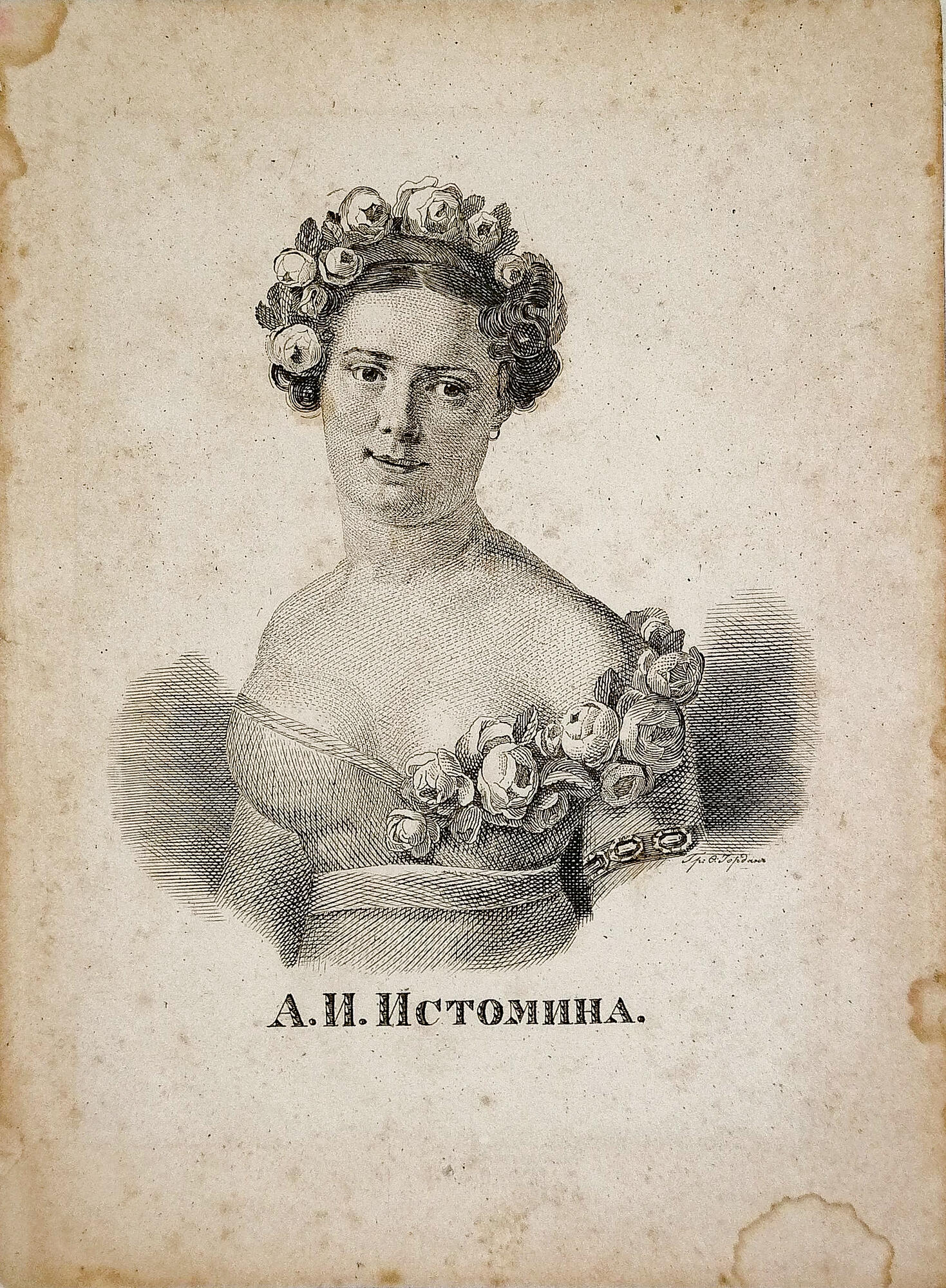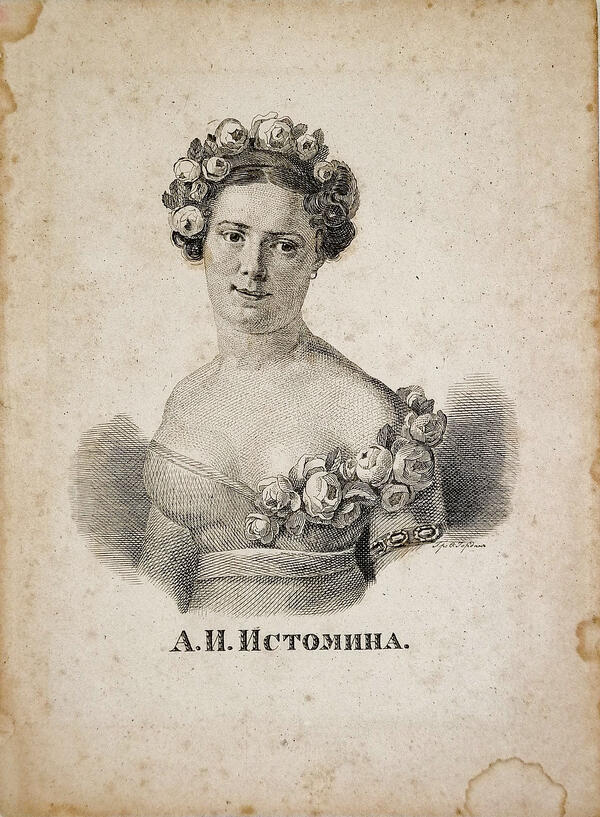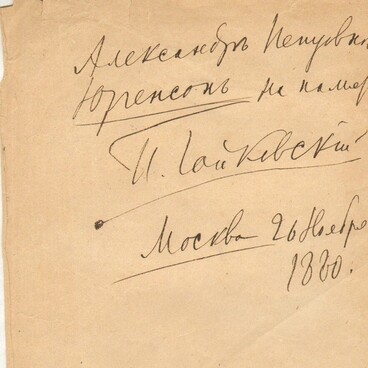The engraving “A. I. Istomina, Russian ballerina”, made by Fyodor Iordan, was transferred to the Museum Estate of Pyotr Tchaikovsky in Votkinsk from the State Museum of Theatre and Music in June 1988.
The engraving depicts the famous Russian ballerina Avdotia Istomina. Her hair is pulled up in a hairstyle and adorned with rosebuds. The ballerina is dressed in a low-cut dress decorated with roses and a wide belt on her waist. The dress is characteristic of the 1820s fashion.
The young ballerina made her debut on the stage of the St. Petersburg Bolshoi Theater and quickly established herself as a leading dancer of the ballet troupe. On stage, she proved herself not only as a talented dancer, but also a dramatic actress.
One of the first historians of the Russian theater, Pimen Arapov, wrote: “Istomina was average height, brunette, beautiful, very slender, had black fiery eyes with long eyelashes, which lent a special character to her face, she had great strength in her legs, aplomb on stage and at the same time she had grace, lightness, quickness in her movements…”
The dancer was close friends with poets, writers, playwrights. She often attended literary salons, receptions, dinner parties. For example, Istomina was a regular guest at the house of the head of the repertoire department of the St. Petersburg imperial theaters, Prince Alexander Shakhovskoy. His apartment was located on the top floor of a building near the theater, for which it was named “Shakhovskoy’s attic”. There Istomina met Alexander Pushkin and Alexander Griboyedov.
After the Decembrist Revolt in 1825, Istomina, who was associated with many revolutionaries, was getting fewer and fewer roles. Her last performance was in 1836. The dancer died of cholera on June 26, 1848, at the age of 49. She was buried in the Bolsheokhtinskoye cemetery in St. Petersburg.
The engraving depicts the famous Russian ballerina Avdotia Istomina. Her hair is pulled up in a hairstyle and adorned with rosebuds. The ballerina is dressed in a low-cut dress decorated with roses and a wide belt on her waist. The dress is characteristic of the 1820s fashion.
Avdotia Istomina was born in St. Petersburg on January 6, 1799. In 1816, she graduated from the St. Petersburg Theater School, whose director was the French ballet master Charles Didelot. Istomina was considered one of his best students.
The young ballerina made her debut on the stage of the St. Petersburg Bolshoi Theater and quickly established herself as a leading dancer of the ballet troupe. On stage, she proved herself not only as a talented dancer, but also a dramatic actress.
One of the first historians of the Russian theater, Pimen Arapov, wrote: “Istomina was average height, brunette, beautiful, very slender, had black fiery eyes with long eyelashes, which lent a special character to her face, she had great strength in her legs, aplomb on stage and at the same time she had grace, lightness, quickness in her movements…”
The dancer was close friends with poets, writers, playwrights. She often attended literary salons, receptions, dinner parties. For example, Istomina was a regular guest at the house of the head of the repertoire department of the St. Petersburg imperial theaters, Prince Alexander Shakhovskoy. His apartment was located on the top floor of a building near the theater, for which it was named “Shakhovskoy’s attic”. There Istomina met Alexander Pushkin and Alexander Griboyedov.
After the Decembrist Revolt in 1825, Istomina, who was associated with many revolutionaries, was getting fewer and fewer roles. Her last performance was in 1836. The dancer died of cholera on June 26, 1848, at the age of 49. She was buried in the Bolsheokhtinskoye cemetery in St. Petersburg.


